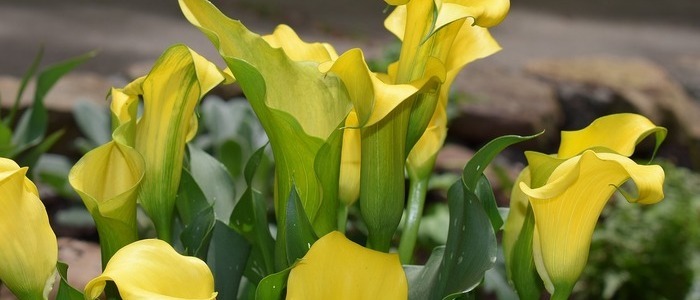The African marigold is an annual flower native to Africa that can bring a bright splash of color to any home and garden. The flowers come in single or double blooms in shades of yellow, orange, or white. They also have a distinct scent that makes them popular choices for cut flowers in bouquets and decorations. Growing them is easy – all you need is full sun and well-drained soil. Plus, they are resistant to pests and diseases, making them a great choice for those with limited gardening experience.
African marigolds love the sunshine and will need at least 6 hours of direct sunlight each day for optimal growth. If your garden does not get enough sun, you can move the plants around throughout the season to make sure they are getting enough light. They also require well-drained soil so their roots won’t rot due to excess moisture. If your soil is too dense, you can add organic matter such as compost or peat moss to help it drain better.
To keep your African marigolds growing strong, make sure to water them regularly but not excessively. About an inch each week should be enough if there is no rain. Mulching around the plants will help retain moisture and keep weeds away while adding a layer of protection against extreme temperatures during summer months. You may also want to add fertilizer once every few weeks during the growing season for extra nutrition.
With the right care, African marigolds can thrive in any garden! Not only are they beautiful and fragrant flowers, but they’re also relatively low-maintenance plants that even beginner gardeners can easily take care of!

African Marigold Plant Frequently Asked Questions
Is the African marigold a houseplant?
No, the African Marigold is not typically grown as a houseplant. It is more commonly cultivated outdoors in gardens or as a cut flower. However, it can be grown indoors temporarily for special occasions or events.
Can African marigold plants grow in containers?
Yes, African marigold plants can be successfully grown in containers. They are well-suited for container gardening as long as the containers are large enough to accommodate their root systems. Using a well-draining potting mix and providing regular watering and fertilization can help ensure healthy growth and abundant blooms in container-grown African marigolds.
Providing Optimal Growing Conditions for the African Marigold
Providing optimal growing conditions is essential for ensuring a successful harvest of African marigolds. To grow these showy flowers, gardeners should take the following steps:
First and foremost, African marigolds need full sun. Plant them in an area that gets at least 8 hours of direct sunlight each day to ensure proper blooming and growth.
Watering is the next key step for keeping your African marigold plants healthy. Water your plants deeply but not too frequently- about once or twice per week should be sufficient, depending on weather conditions. Make sure the soil drains well so that it doesn’t become waterlogged and stressed.
Along with watering, adding organic matter can help improve soil health and promote plant growth. Compost or aged manure are great options for providing extra nutrients to the soil, as well as improving its structure and increasing drainage capabilities.
Mulching around your African marigold plants can also help retain moisture in the soil while keeping weeds away from your precious flowers. A layer of straw or wood chips spread around 2-3 inches thick is ideal for this purpose. Keep mulch away from the base of the plant to avoid rot caused by too much moisture accumulation at its roots.
Fertilizing every few weeks during the growing season will provide extra nutrients to keep your African marigolds healthy and blooming beautifully all summer long. Choose a balanced fertilizer that is specially formulated for flowering plants like these. They usually come in granular form and are easy to apply in small amounts directly onto the soil surface near each plant’s root zone.
How to Propagate African Marigold Plant
Propagating African Marigolds is a rewarding experience that can add a touch of beauty to any garden. With the right preparation, anyone can easily grow beautiful marigold plants in their own backyard. This guide will walk you through all the necessary steps for successful propagation, from choosing the right planting area and variety of seed to planting them and transplanting them outdoors.
The first step is to choose an ideal planting area with well-draining soil that receives at least 6 hours of direct sunlight each day. You’ll also need to consider the climate and region you live in when selecting your African marigold seed variety. Some varieties do better in cooler climates while others thrive best in hotter regions.
Once you’ve found an appropriate spot, it’s time to prepare the soil for planting. Use aged compost and other organic matter such as manure or peat moss to enrich it and create a balanced environment for your seedlings. Make sure that you mix these ingredients thoroughly into the soil before adding any seeds.
When you’re ready, plant your seeds 1/2 inch deep into the soil and cover lightly with additional soil or mulch. Water regularly until germination occurs – usually within 7-14 days – then continue caring for them until they are ready to be transplanted outdoors. It’s important not to overcrowd your seedlings, so make sure there is enough space between each one when planting them.
Transplanting your African Marigolds outdoors should take place after all danger of frost has past. And when daytime temperatures are consistently warm enough for outdoor growth – typically around mid-spring where possible. Once they have been transplanted outdoors, they should require minimal maintenance. Apart from watering during dry periods or if temperatures exceed 90 degrees Fahrenheit (32 degrees Celsius).
Following this guide will ensure that propagating African Marigold plants is a successful and rewarding experience! With careful preparation and attention paid to each step along the way, anyone can easily grow beautiful marigolds in their own garden!
Common Pests and Diseases of the African Marigold
It is important to understand the common problems that African Marigolds can face in order to be able to prevent and treat them effectively. Aphids, caterpillars, and whiteflies are some of the most common pests of African marigold plants.
These pests feed on the leaves of the plant, causing yellowing or discoloration as well as stunted growth. Properly timed applications of insecticides can help control pest infestations in African marigold plants.
The most common disease of the African Marigold is powdery mildew which appears as white spots on leaves and stems. To treat this fungus, fungicides should be applied at regular intervals.
Downy mildew is another common problem for African marigolds which appears as yellow-brown spots on leaves and stems; copper-based fungicides are effective against this fungus.
Root rot is also an issue for African Marigolds; it can be prevented by proper soil drainage and monitored regularly for signs of infection so it can be treated quickly if found. Regular monitoring and maintenance are essential when caring for any plant, but especially one as delicate as an African Marigold.
By understanding their unique needs, identifying potential issues early on, and taking preventive measures such as using fungicides or insecticides when necessary you will ensure that your plants stay healthy year-round!
Conclusion
In conclusion, African Marigolds are a beautiful and popular plant that can be a great addition to any garden. However, they can be subject to a variety of common problems, such as pests, diseases, and improper pruning and propagation. To prevent and treat these issues, it is important to practice good gardening techniques such as avoiding overcrowding of plants, providing adequate drainage, and regularly monitoring for signs of disease. Furthermore, regular maintenance and pruning can help ensure healthy growth and reduce the risk of pest infestations.
It is also essential to keep a close eye on your African Marigolds to identify any potential problems early on. Early detection is key in preventing costly damages or even killing the plant completely. Additionally, whenever possible it’s best to use natural solutions such as beneficial insects like ladybugs rather than chemical pesticides that may have negative environmental impacts.
Overall, African Marigolds are an excellent choice for any gardener looking for easy-to-care-for plants that bring beauty to their garden year round. With proper care and maintenance they can thrive in almost any environment while adding vibrant color to your landscape.
Other Yellow House Plants













